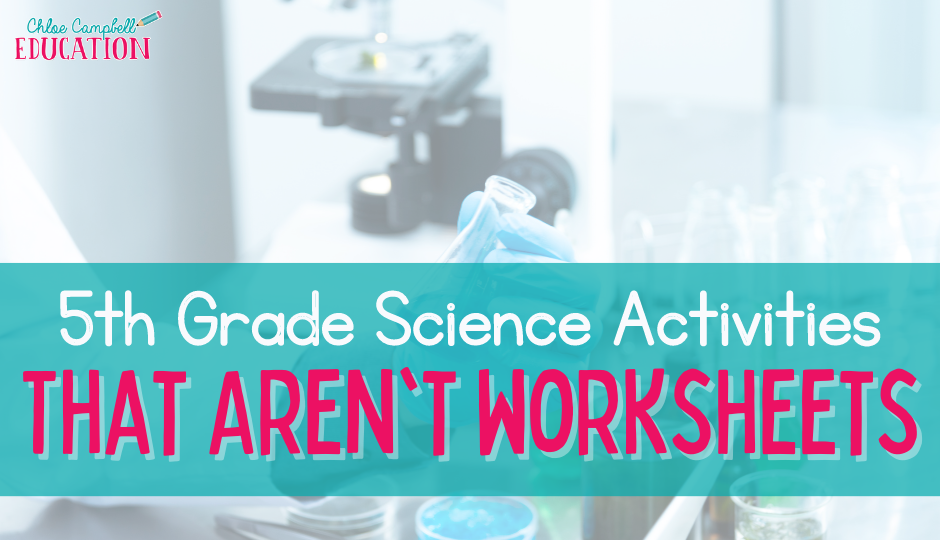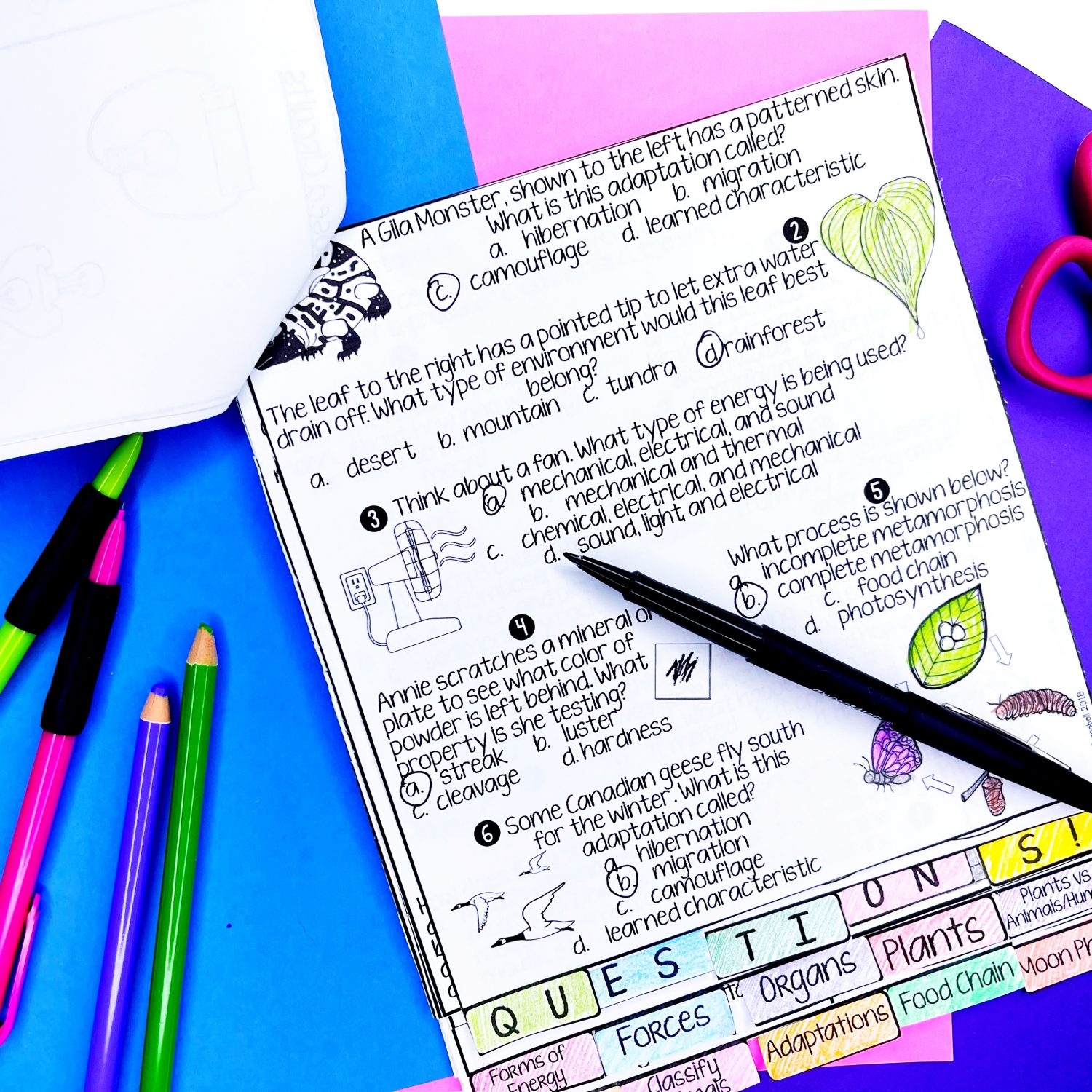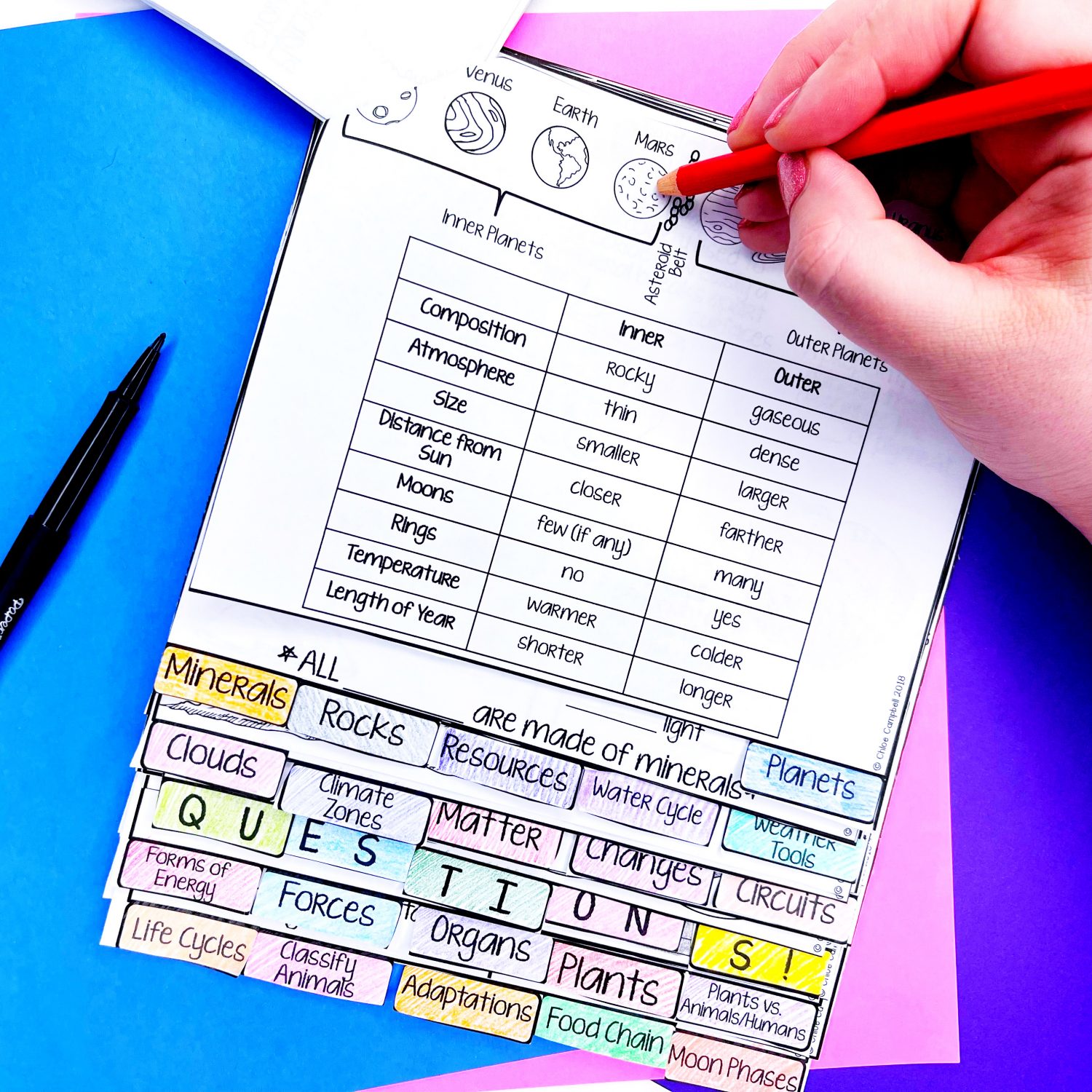Sometimes when it comes to review sessions we tend to fall back on the ho-hum worksheet activities. And I get it, cause it is usually quick and easy to find some review worksheets and spend time walking students through the concepts they should already know. You can quickly identify who needs more help with certain topics, group students easily into levels based on understanding, and check off those standards you have to cover with ease. But I think there’s a better (and more fun) way to spruce up “just a worksheet”. Here are my five favorite review activities that aren’t another worksheet.
1. Science fair
Maybe that sounds like “too much” for review. And true, a last-minute science fair wouldn’t do much good. But if you make plans ahead of time, this could be a great opportunity for students to make applications to what they’ve learned this year. It may be helpful at this age to put together packets of terms and applications that must be included, as well as plenty of practice time for students to work on any presentation skills you might want them to work on. Still, if you have the time to put together a science fair, it really is a great way for students to apply their knowledge.

2. Lap books
Alternatively, you might look at scaling down to a lapbook review session. Each student can be assigned a lapbook topic to create. Be sure to outline what they will need to include, and any important terms that they need. Include the opportunity for students to present or share with a group what they have created, allowing them to be the “teacher”. You can also keep these lapbooks and have students exchange them to review different concepts and topics they need.
3. Flip book
If you’d like each student to keep their own collection of reviewed information, have them create a flip book. It’s a step above worksheets and can be packed with a ton of various topics and activities. You can review ALL the 5th grade science standards by checking out my flip book here. It has a printable and digital format so even if you’re still in a hybrid setup or teaching entirely virtually, you can use this resource. This is great for test prep or end of year review.
Utilize all year long and add notes as you teach each unit. By the end of the year, you’ll have a flip book completed and ready to use as a review tool.
4. Stations
Create stations for your students to interact with and then report their observations. Sometimes that is the hardest part for students – taking the knowledge from their brain and articulating it into observations they can clearly communicate. Give your students the opportunity to practice this skill by creating stations within your classroom for your students to visit and interact with.
They can be centered around standardized test scenarios, or “real life” practice. Take time to look at what topics your students struggled with during the year and focus your stations on those to help bridge the gaps in their knowledge.
5. Escape room puzzles
Now, this is a great activity if you’ve got the time and creativity! Escape rooms are just inherently fun. Put together some activities that involve students answering questions to reveal a clue, or solving puzzles to gain a password. There are so many templates out there to get you started (what would we do without Pinterest?) and most can be easily converted to printable or digital, depending on what works best with your classroom style.

You can purchase an absolutely awesome science review resource here. Do you have favorite activities that are excellent for review? Share your favorites in the comments, or find me on Facebook and Instagram to continue the conversation there!
Here are some other blog posts you will love:
4 Exciting and Engaging Natural Disasters Activities for the Classroom
4 Strategies to Keep Your Energy Lesson Plans Relatable & Engaging






Leave a Reply